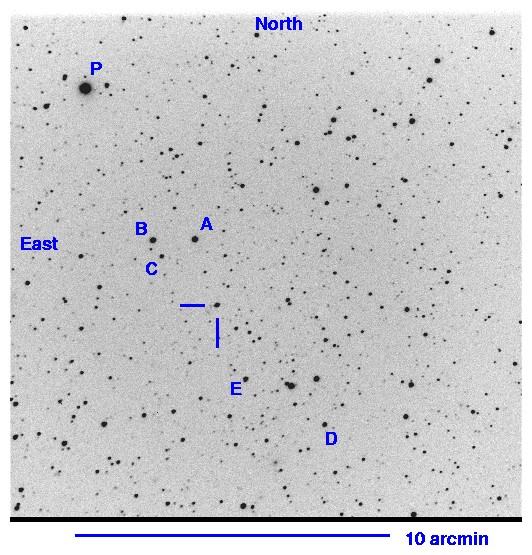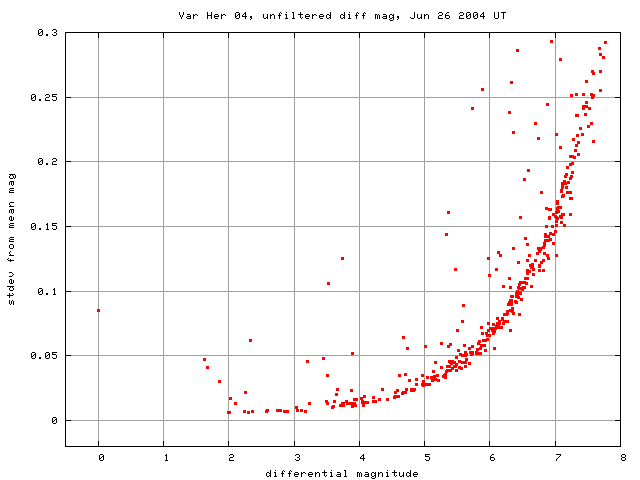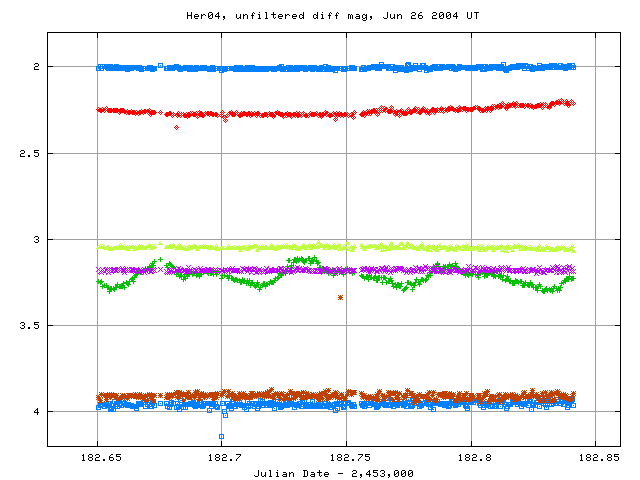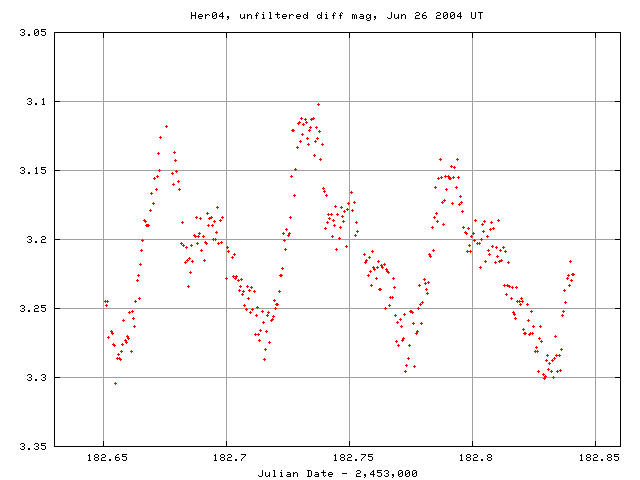
On Jun 26, 2004, UT, I used the 12-inch Meade LX-200 to measure a variable star which had just recently been discovered. This new cataclysmic variable doesn't have an official name yet, so I called it Her04, one of the temporary names for it. You can read more about the variable star at this site from the AAVSO:
RA = 18 39 26.16 Dec = +26 04 10 (J2000)
The plan:
Notes from the night
Here's a chart of the field of Her04 based on one of my images; the field is about 15 arcminutes wide.
Note that
I measured the instrumental magnitude of each star with aperture photometry, using a radius of 4 pixels = 7.2 arcseconds, and sky defined by an annulus around each star. Following the procedures outlined by Kent Honeycutt's article on inhomogeneous ensemble photometry, I used all stars available in each image to define a reference frame, and measured each star against this frame.
Below is a graph of the scatter in differential magnitude versus magnitude. Note that several of the brightest stars in the field must be saturated, since their scatter is slightly larger than those stars which are fainter. I did not include these brightest stars in the solution as references.

The two stars with differential magnitudes between 2 and 3 and large scatter are close doubles, which confuses my aperture photometry. Her04 is a point at differential mag 3.209 with scatter 0.046. Most of the other stars with large scatter are either close doubles or located near the edges of the frame.
I made a graph (below) showing differential magnitude in the ensemble solution versus time during the night. One can see that most of the stars in the field are not varying appreciably, but Her04 is, as the green light curve shows. Star B is the blue dots (nice and level -- good!). Note that star A, in red, shows a small decline and gradual rise in brightness during the night. I suggest it not be used as a comparison. The other data belong to stars marked C, D, E in the chart above.

Here's a closeup of the variation in Her04 itself:

I've made a table of the measurements themselves, with three different flavors of time. "HJD" is heliocentric Julian Date. I report the magnitude of the variable star relative to that of star B = TYC 2111-489-1, in the sense:
mag = (Her04 - B)
Here's the start of the table:
# Measurements of Her04 made at RIT Obs, Jun_ 26, 2004 UT, # taken by Michael Richmond. # All data taken with 12-inch LX-200 + no filter + SBIG ST-9 CCD # with focal reducer yielding f/6.3 # Each exposure 30 seconds long; the tabulated times are midexposure # and accurate only to +/- 1 second. # 'mag' is a differential magnitude based on ensemble photometry # tabulated value is 'mag fainter than star B = TYC 2111-489-1' # # UT day JD-2,450,000 HJD-2,450,000 mag Jun_26.15060 3182.65060 3182.65395 1.239 Jun_26.15110 3182.65110 3182.65445 1.242 Jun_26.15159 3182.65159 3182.65494 1.239
Last modified 6/26/2004 by MWR.